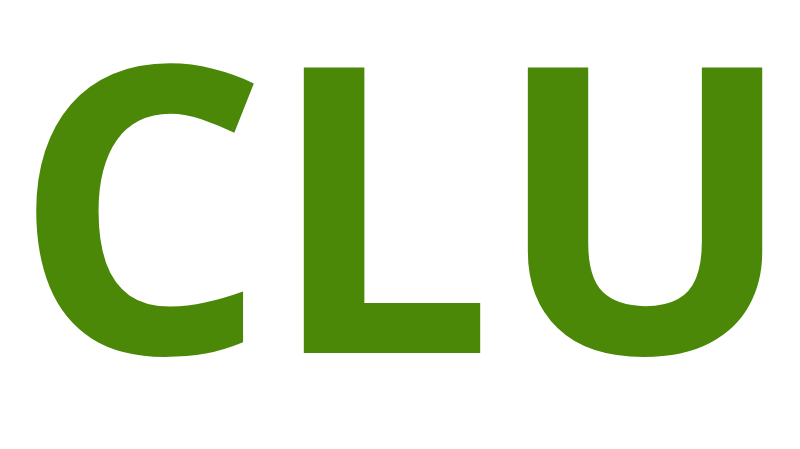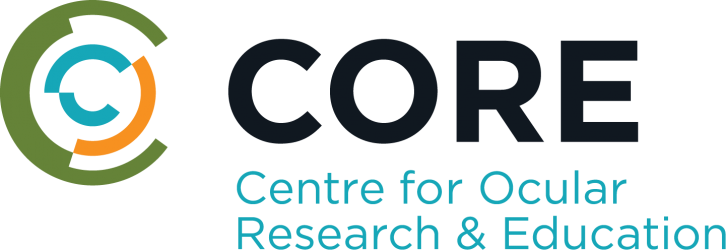Jump to:
Peer-reviewed articles
2025
Shokrollahi,P., Garg,P., Wulff,D., Hui,Al., Phan,C-M., Jones,L.
Vat Photopolymerization 3D Printing Optimization: Analysis of Print Conditions and Print Quality for Complex Geometries and Ocular Applications
International Journal of Pharmaceutics 2025;668(January):124999
[ Show Abstract ]
Abstract: 3D printing, also known as additive manufacturing, continues to reshape manufacturing paradigms in healthcare by providing customized on-demand object fabrication. However, stereolithography-based 3D printers encounter a conflict between optimizing printing parameters, requiring more time, and print efficiency, requiring less time. Moreover, commonly used metrics to assess shape fidelity of 3D printed hydrogel materials like ‘circularity’ and ‘printability’ are limited by the soft nature of hydrogels, that can cause irregularities in their boundary. To unlock the full potential of 3D printing of biomaterials, it is also necessary to understand correlation between printing parameters and ink properties. In this work, a method based on curing depth, overcuring (cumulative cure), and print thickness was developed, which enables a time-efficient and reliable determination of printing conditions for complex geometries using gelatin methacrylate hydrogel biomaterial ink. We also examined the impact of printing direction on the print quality in terms of object/print thickness and aspect ratio. Moreover, the effects of dye concentration, exposure time, and layer thickness on print quality were evaluated, with discussions focused on the correlation between print dimension to layer thickness. Further evaluation was achieved by successfully printing bioinspired corneal stroma-like scaffold and delicate structures like a contact lens and a model eyeball, substantially expanding the scope of this method in producing high-quality prints with intricate details. We also demonstrate the effectiveness of ‘Feret ratio,’ another measure of object shape, in assessing the shape fidelity of different prints. Overall, the results highlight the practical potential of this method in enhancing the speed and reliability of the 3D printing processes involving complex geometries using a low-cost 3D printers.
2024
Ganguly,S., Wulff,D., Phan,C-M., Jones,L., Tang,X.
Injectable and 3D Extrusion Printable Hydrophilic Silicone-Based Hydrogels for Controlled Ocular Delivery of Ophthalmic Drugs
Applied Bio Materials 2024;7(9):6286-6296
[ Show Abstract ]
While silicone elastomers have found widespread use in the biomedical industry, 3D printing them has proven to be difficult due to the material’s slow drying time, low viscosity, and hydrophobicity. Herein, we arrested the hydrophilic silicone (HS) macrochains into a semi-interpenetrating polymer network (semi-IPN) via an in situ photogelation-assisted 3D microextrusion printing technique. The flow behavior of the pregel solutions and the mechanical properties of the printed HS hydrogels were tested, showing a high elastic modulus (approximately 15 kPa), a low tan δ, high elasticity, and delayed network rupturing. The uniaxial compression tests
demonstrated a nearly negligible permanent deformation, suggesting that the printed hybrid hydrogel maintained its elastic properties. Drug loading and diffusion in the microporous hydrogel are shown via the non-Fickian anomalous transport mechanism, leading to highly tunable loading/releasing profiles (approximately 20% cumulative release) depending on the HS concentration. The drug encapsulation exhibits exceptional stability, remaining intact without any degradation even after a storage period of 1 month. As far as we know, this is the first soft biomaterial based on HS that functions as an exceptional controlled drug delivery device.
Wong,K. Y., Phan,C.M., Chan,Y.T., Chuy-Ying Yuen,A., Zhao,D., Chan,K. Y., Do,C. W., Chuen Lam,T., Han Qiao,J., Wulff,D., Hui,A., Jones,L., Wong,M. S.
A review of using Traditional Chinese Medicine in the management of glaucoma and cataract
Clinical and Experimental Optometry 2024;107(2):156-170
[ Show Abstract ]
Traditional Chinese Medicine has a long history in ophthalmology in China. Over 250 kinds of Traditional Chinese Medicine have been recorded in ancient books for the management of eye diseases, which may provide an alternative or supplement to current ocular therapies. However, the core holistic philosophy of Traditional Chinese Medicine that makes it attractive can also hinder its understanding from a scientific perspective – in particular, determining true cause and effect. This review focused on how Traditional Chinese Medicine could be applied to two prevalent ocular diseases, glaucoma, and cataract. The literature on preclinical and clinical studies in both English and Chinese on the use of Traditional Chinese Medicine to treat these two diseases was reviewed. The pharmacological effects, safety profile, and drug-herb interaction of selected herbal formulas were also investigated. Finally, key considerations for conducting future Traditional Chinese Medicine studies are discussed.
Scientific Presentations
2023
Garg P, Wulff D, Phan CM, Jones L. Evaluation of a biodegradable bioink for the fabrication of ophthalmic devices using 3D printing The Association for Research in Vision and Ophthalmology, New Orleans, LA, USA, April, 2023 [ Show Abstract ][ PDF ]
Purpose: To develop a degradable bioink for fabricating ophthalmic devices using 3D printing.
Methods: The bioink formulation consisted of 10% gelatin methacrylate (GelMA), 0.6% lithium phenyl-2,4,6-trimethylbenzoylphosphinate (LAP), and 5% yellow dye as a light absorbing agent to improve print resolution. The bioink was used to 3D print square sheets (7x7x1 mm) using a commercial masked-stereolithography (mSLA) 3D printer at 95% humidity and 37°C temperature. The degradation of printed sheets was evaluated with different concentrations (0,25,50,100 μg/ml) of matrix metalloproteinase (MMP9) enzyme 37°C. MMP9s are naturally found in the tear film and elevated in various diseased states such as in corneal wounds and dry eye disease. The weights of the sheets were measured at t = 0,4,6,8,12,16,24 hrs. Another set of cubes (1x1x1 cm) was autoclaved and kept sealed in storage at different temperatures (4°C, 25°C, and 37°C) in phosphate buffered saline (PBS) and their weight was measured on day 10. An attempt was made to fabricate a contact lens using this bioink.
Results: Samples that were exposed to MMP9 enzymes showed a time-dependent degradation with increasing enzyme concentration. The samples incubated with 100 and 50 μg/ml of MMP9 were completely degraded by the end of 12 and 16 hrs, respectively. At the end of 24 hrs, the samples incubated at 25 μg/ml enzyme showed 72.8% degradation whereas the control samples did not show any signs of degradation. Interestingly, samples that were autoclaved and kept in storage also did not show any signs of degradation at all temperatures. A 3D-printed CL with overall diameter 14mm and thickness 1mm was printed without any support structures within 1 hour.
Conclusion: This study showed GelMA-based bioink can be used to fabricate biodegradable devices such as contact lenses. The biomaterials degrade in the presence of MMP-9 and future work will work on tuning the degradation kinetics of these materials, as well as incorporating ocular drugs.
Garg P, Wulff D, Phan CM, Jones L. Fabrication of a degradable ocular drug delivery system using 3D printing CBB 2023 Conference: Waterloo for Health, Technology and Society, March, 2023 [ PDF ]
Wulff D, Phan C-M, Jones L. Development of a 3D-printed hydrogel eye model for evaluating ocular drug delivery The Association for Research in Vision and Ophthalmology, New Orleans, LA, USA, April, 2023 [ Show Abstract ][ PDF ]
Purpose: To 3D-print a soft hydrogel eye model using a novel bioink for evaluating ocular drug delivery.
Methods: The eye model was designed using CAD software. It includes several key components made from a hydrogel, including an upper and lower eyelid, a frontal surface to mimic the cornea and sclera, and an internal chamber to mimic the interior of the eye. The components were designed to fit with an existing blink model that was developed previously in our laboratory that allows for automated blinking and tear collection. The eyeball and the lower eyelid were 3D bioprinted using a modified commercial mSLA printer (Photon Mono X, AnyCubic, Shenzhen, China). Various bioinks were tested, consisting of 5-15% gelatin methacryloyl, 1-5% polyvinyl alcohol, 5-30% polyethylene glycol diacrylate, 0.4-0.6% lithium phenyl-2,4,6-trimethylbenzoylphosphinate, and 2-3% of a yellow food-grade dye in phosphate buffer solution. Different formulations were evaluated to create prints that were desirable in terms of print quality, stiffness, and flexibility. Printing was undertaken at 40˚C to ensure the ink remained a liquid and at 90% humidity to protect the parts and ink from desiccation.
Results: Both the eye and the lower eyelid were successfully printed in high resolution using 100 µm layer heights without any support structures within 3 hours. The prints are hydrophilic with a 60-80% water content, are soft and flexible, and are fabricated with biocompatible biomaterials. Both components were able to be incorporated into an in vitro blink model which will allow for improved testing that more closely mimics a human ocular system, in particular, drug absorption through the cornea. A port on the eye allows for the sampling of fluid from the interior eye model for testing the diffusion of drugs to the posterior chamber when released by topical ophthalmic formulations or anterior segment devices such as contact lenses.
Conclusion: This study demonstrated that a modified mSLA 3D printer can be used to fabricate soft, hydrophilic ocular model components using a novel biocompatible bioink.
2022
Phan C-M, Wulff D, Garg P, Jones L.. Developing a novel in vitro eye model using 3D bioprinting for drug delivery studies The Association for Research in Vision and Ophthalmology, Denver, CO, USA, May 1, 2022 [ Show Abstract ]
Purpose: To develop an in vitro eye model using a novel 3D bioprinting method for testing the release of ophthalmic formulations to the posterior ocular region.
Methods: The eye model was designed using CAD software and includes both an anterior aqueous chamber and a posterior vitreous chamber. The vitreous chamber is surrounded by a blood chamber to mimic vessels that can be used to transport a blood-like substance. Three inlet ports control the flow of fluid into the chambers and the blood channels, and the three outlet ports allow fluids to exit these compartments. The eye model was 3D printed on a commercial mSLA printer (Photon Mono X, AnyCubic), which was retrofitted with a humidity and temperature control module to create a printing environment at 37°C and >80% humidity. The bioink formulation consisted of 10% gelatin methacrylate (GelMa). After printing, the models were incubated at 37°C to remove any uncured GelMa within any hollow compartments. For this study, phosphate-buffered saline was used as an aqueous and vitreous humour mimic. To evaluate the diffusion of a small hydrophilic molecule on the eye model, a contact lens (Air Optix) was soaked with a water-soluble red food dye for 1 hour and then placed on the eye model. The amount of dye in the anterior chamber, posterior chamber, and blood channels was measured using UV spectrophotometry after 24 hours.
Results: The entire model can be printed without any support structures within approximately 3 hours. The 3D printed eye model can also be autoclaved for testing that requires sterility. Because there were no diffusion barriers present in the current model, the red dye was detected in all three chambers after 24 hours. The highest concentration of dye was found in the anterior chamber, followed by the blood chamber and then the posterior chamber.
Conclusions: The prototype developed in this study can be used as a starting point to develop enhanced 3D printed eye models to test drug release kinetics of various devices and formulations. Future work will focus on adding the appropriate diffusion barriers to better simulate drug diffusion through ocular tissues.
Layman Abstract: The aim of the study was to create an advanced eye model using commercial 3D printing methods. Current 3D bioprinters are extremely expensive and regular commercial 3D printers do not have the capabilities to print biological materials. We are developing a method to 3D print sophisticated eye models using inexpensive 3D printers. The models from this research can further be refined for studying drug absorption in the eye. This research will also enable researchers to create their own biological models using 3D printing methods.
Phan C-M, Wulff D, Jones L.. Developing bioinks for commercial mSLA printers and a method for quantifying print quality Canadian Biomaterial Society Conference, Banff, AB, May 25, 2022 [ PDF ]
Wulff D, Phan C-M, Jones L. 3D printing using a novel bioink with a commercial mSLA printer to fabricate a model contact lens The Association for Research in Vision and Ophthalmology, Denver, CO, USA, May 2, 2022 [ Show Abstract ]
Purpose: To develop a cost-effective and scalable 3D printing method and novel bioinks to fabricate contact lenses.
Methods: The bioink formulations consisted of GelMA (gelatin methacrylate), LAP (Lithium phenyl-2,4,6-trimethylbenzoylphosphinate), and a yellow food-grade dye. The dye minimizes unwanted light leakage during the photopolymerization process. A commercial mSLA (masked stereolithography) printer, the Photon Mono X (AnyCubic, Shenzhen), was retrofitted with a custom temperature and humidity control kit. The printing process was performed at 40 oC and 90% humidity to ensure that the GelMA remained at a liquid state and to prevent the bioink from drying out, respectively. A set of matrix cubes of varying sizes with holes was used as a standard control. Images of the cubes were taken with a camera, top-down and side-review, analyzed with the ImageJ software and compared with the original CAD designs to derive an overall print quality score. Two print variables, exposure time (5 s to 40 s) and yellow dye concentration (1 – 7%), were analyzed in this study.
Results: The best resolution with the highest print scores were obtained at either 5% yellow dye concentration and 30 seconds exposure time, or 3% yellow dye concentration and 20 seconds exposure time. There was an overall optimal range for both print times (20 - 30 s) and yellow dye concentration (3 - 5%). Values above or below this critical value resulted in lower print quality scores of the standard cubes. A prototype contact lens with a 200 µm thickness was able to be 3D printed using the developed print methods and parameters, with a total print time of approximately 20 minutes. Approximately 28 contact lenses can be printed at the same time using the 3D printer. However, the surface and edges of the 3D printed contact lens were still visually very rough.
Conclusions: The current study demonstrated that a low-cost commercial 3D mSLA printer can be used to fabricate model contact lenses using a hydrogel material. Still, further work is necessary to improve the print quality for fabricating ultra-thin devices such as contact lenses. Future work will use this 3D printing method to fabricate contact lenses for drug delivery.




